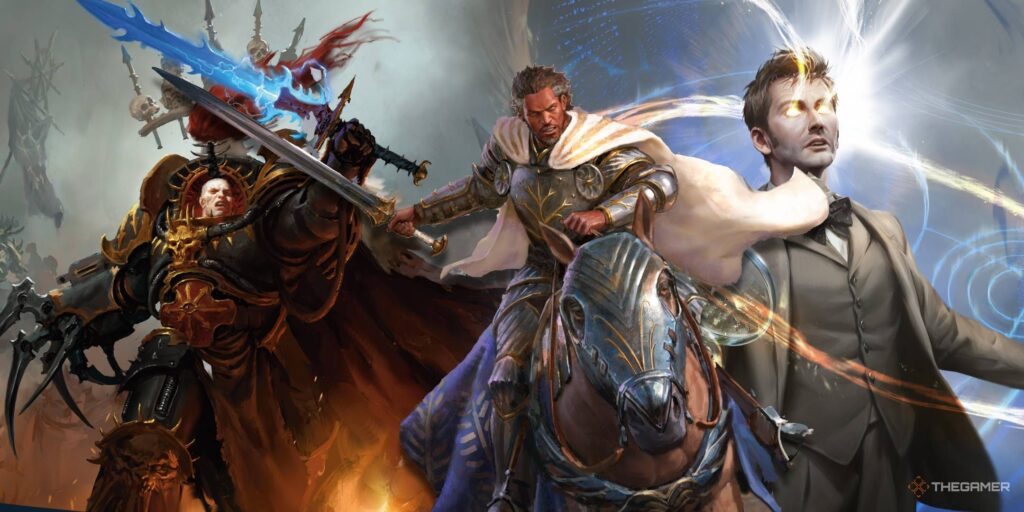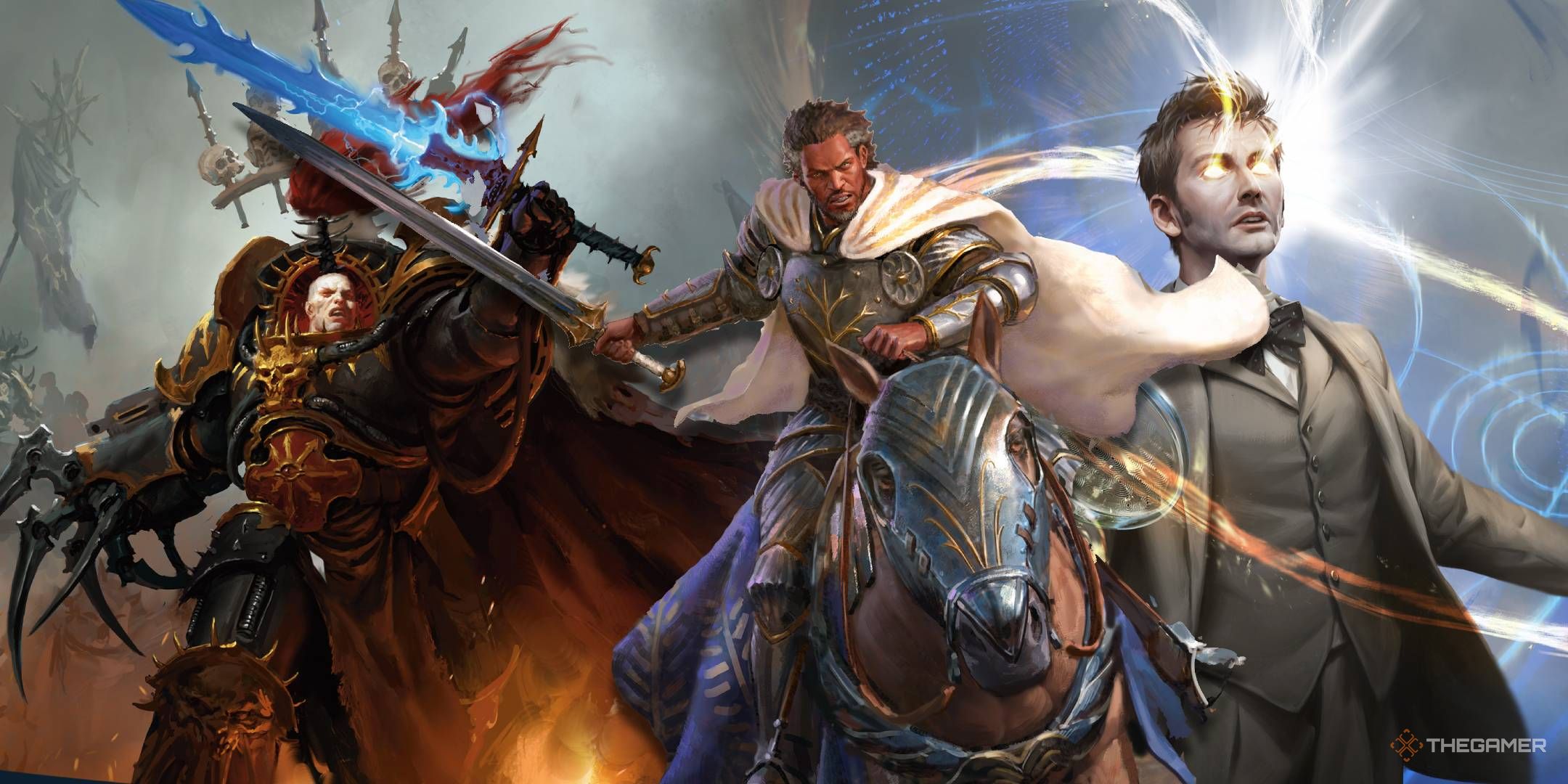
Exploring the Multiverse: A Deep Dive into MTG Crossover Sets
Magic: The Gathering (MTG) has always been a game about exploring fantastical worlds, battling with powerful creatures, and wielding potent spells. However, Wizards of the Coast has recently taken this concept to a whole new level with the introduction of MTG crossover sets. These sets blend the mechanics and lore of Magic with iconic universes from other franchises, creating unique and exciting experiences for players. From battling with Transformers to exploring the grim darkness of Warhammer 40,000, these MTG crossover sets offer a fresh perspective on the game we all know and love. This article will delve into the world of these MTG crossover sets, examining their impact on the game, their design challenges, and what they mean for the future of Magic: The Gathering.
What are MTG Crossover Sets?
MTG crossover sets, also known as Universes Beyond, are expansions that incorporate intellectual properties (IPs) from outside the Magic: The Gathering universe. This means characters, settings, and themes from popular franchises like The Lord of the Rings, Doctor Who, and even Fortnite are brought into the game as playable cards and mechanics. These sets are designed to appeal to both existing MTG players and fans of the crossover IP, expanding the game’s reach and introducing new players to the world of Magic. The first major foray into MTG crossover sets was with the Secret Lair drops, featuring collaborations with properties like The Walking Dead and Stranger Things. These were followed by full-fledged set releases, such as the highly anticipated Lord of the Rings: Tales of Middle-earth, which became one of the best-selling sets in Magic’s history.
The key difference between these sets and standard MTG expansions is their focus on translating the themes and characters of the crossover IP into Magic mechanics. This often involves creating new card types, abilities, and keywords that reflect the unique aspects of the franchise. For example, the Warhammer 40,000 Commander decks introduced the ‘Squad’ mechanic, allowing players to create multiple copies of certain creatures, mirroring the horde-like nature of the Tyranids. The success of these MTG crossover sets hinges on striking a balance between staying true to the source material and maintaining the core identity of Magic: The Gathering.
Notable MTG Crossover Sets
The Lord of the Rings: Tales of Middle-earth
Perhaps the most successful MTG crossover set to date, Tales of Middle-earth brought the iconic world of J.R.R. Tolkien’s The Lord of the Rings to Magic: The Gathering. The set was a massive hit with both MTG players and fans of the books and movies, thanks to its faithful adaptation of the source material. Characters like Frodo, Gandalf, and Aragorn were represented as powerful and flavorful cards, while the set’s mechanics captured the epic scope of the War of the Ring. The set also featured stunning artwork inspired by the movies, further immersing players in the world of Middle-earth. One of the most notable features of this MTG crossover set was the serialized The One Ring card, which became one of the most valuable and sought-after cards in Magic history.
Warhammer 40,000 Commander Decks
This collaboration brought the grim darkness of the far future to Magic: The Gathering with a series of Commander decks based on the Warhammer 40,000 universe. Each deck represented a different faction from the game, such as the Imperium of Man, the Necrons, and the Tyranids. The decks were designed to capture the unique playstyles and themes of each faction, with cards featuring iconic characters like the Emperor of Mankind and Ghazghkull Thraka. The Warhammer 40,000 Commander decks were praised for their flavorful design and their ability to introduce new players to both Magic: The Gathering and the Warhammer 40,000 universe. These MTG crossover sets were a great success.
Doctor Who Commander Decks
Another set of Commander decks, the Doctor Who collaboration brought the time-traveling adventures of the Doctor to Magic: The Gathering. These decks featured different incarnations of the Doctor and their companions, as well as iconic villains like the Daleks and the Cybermen. The decks incorporated mechanics that reflected the show’s themes of time travel and regeneration, creating a unique and flavorful play experience. The Doctor Who Commander decks were a hit with fans of the show, who appreciated the attention to detail and the faithful adaptation of the source material. This MTG crossover set proved popular with Commander players.
Assassin’s Creed
Scheduled for release in July 2024, this MTG crossover set promises to immerse players in the historical and stealthy world of Assassin’s Creed. Players can expect to see iconic assassins, historical settings, and parkour-inspired mechanics. This set aims to capture the essence of the popular video game franchise within the framework of Magic: The Gathering.
The Impact of MTG Crossover Sets
MTG crossover sets have had a significant impact on the game, both positive and negative. On the positive side, they have brought new players to Magic: The Gathering, expanded the game’s reach, and created unique and exciting play experiences. The Lord of the Rings: Tales of Middle-earth, for example, attracted a large number of new players who were fans of the books and movies, helping to boost sales and increase the game’s popularity. These sets have also allowed Wizards of the Coast to experiment with new mechanics and card types, pushing the boundaries of what’s possible in Magic. [See also: MTG Standard Rotation Explained]
However, MTG crossover sets have also faced criticism from some players. Some argue that they dilute the core identity of Magic: The Gathering, making it feel less like a unique fantasy world and more like a generic platform for other IPs. Others worry that the focus on crossovers is taking away from the development of original Magic settings and characters. There are also concerns about the long-term impact of these sets on the game’s lore and continuity. For example, how do these crossovers fit into the established multiverse of Magic: The Gathering? These are valid concerns that Wizards of the Coast needs to address as they continue to explore the possibilities of MTG crossover sets.
The Future of MTG Crossover Sets
Despite the criticisms, it seems likely that MTG crossover sets are here to stay. Wizards of the Coast has already announced several future collaborations, including sets based on Final Fantasy. These sets offer a valuable opportunity to expand the game’s audience and generate revenue, and they have proven to be popular with many players. However, it’s important for Wizards of the Coast to carefully consider the impact of these sets on the game’s identity and lore, and to ensure that they are integrated into the Magic universe in a way that feels organic and respectful. This includes continued communication with the player base and addressing concerns about power creep and the overall direction of the game. With careful planning and execution, MTG crossover sets can continue to be a positive force for Magic: The Gathering, bringing new players to the game and creating exciting new experiences for everyone.
Ultimately, the success of MTG crossover sets depends on their ability to capture the essence of both Magic: The Gathering and the crossover IP. They need to be flavorful, mechanically interesting, and respectful of the source material. When done right, these sets can be a win-win for both Wizards of the Coast and the fans, expanding the reach of Magic and introducing new audiences to the game we all love. The future looks bright for these MTG crossover sets, provided they continue to prioritize quality and authenticity. [See also: The Best MTG Deck Archetypes]

